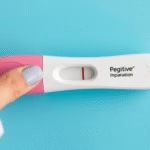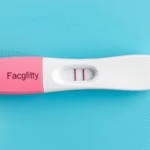Understanding Implantation Bleeding and Period
Understanding the differences between implantation bleeding and a menstrual period is crucial for many individuals trying to conceive or tracking their reproductive health. Implantation bleeding occurs when a fertilized egg attaches to the uterine lining, while a menstrual period is the shedding of the uterine lining when conception does not occur. This distinction is significant because the timing, appearance, and symptoms can differ considerably between the two. By being informed, individuals can make educated decisions regarding their health and when to consult a healthcare provider.
Implantation bleeding typically happens around six to 12 days after conception, which is often before a missed period. It is usually lighter in color—often a light pink or brown—as opposed to the bright red color of menstrual blood. Additionally, it is generally brief, lasting only a few hours to a couple of days, and does not accompany the typical menstrual symptoms such as cramps or significant breast tenderness.
Timing of Implantation Bleeding vs. Period
The timing of implantation bleeding usually occurs about one week after ovulation when fertilization of the egg happens. For those with a typical 28-day cycle, implantation bleeding might manifest around days 20 to 24 of the cycle. Conversely, a period typically occurs on a set schedule based on the individual’s unique cycle length. If a person has a regular cycle, a missed period typically indicates a possible pregnancy.
This distinction in timing can help individuals identify whether they are experiencing a period or implantation bleeding. If the bleeding occurs before the expected arrival of the next period, it could indicate implantation, especially if one is trying to conceive and notices the bleeding.
Monitoring the cycle with a calendar or an app can help better understand these timelines, making it easier to differentiate between the two types of bleeding.
Color of the Blood
The color of the bleeding is an essential factor in differentiating these two occurrences. Implantation bleeding is typically a light pink or brown color, whereas menstrual blood is generally bright red and can become darker as the period progresses. The lighter color associated with implantation bleeding indicates less blood being released, reflecting its nature as the attachment of a fertilized egg to the uterine lining.
During a normal period, the color might vary from bright red on the first day to darker shades as the flow decreases. If the bleeding appears unusual for an average menstrual cycle, it could warrant further investigation to determine whether it may be implantation bleeding.
It is beneficial to monitor not only the color but also the consistency of the blood, as implantation bleeding often doesn’t create a heavier flow, thereby differing from a regular menstrual period.
Duration of Bleeding
The duration of bleeding can also provide clues distinguishing implantation bleeding from a menstrual cycle. Implantation bleeding generally lasts for a few hours to two days, whereas a regular period can last anywhere from three to seven days, depending on the individual. The brevity of implantation bleeding signifies minimal disruption compared to the typical duration of a menstrual cycle.
If a person notices spotting that only lasts a day or two, especially if it occurs shortly before a period is expected, it could be indicative of implantation bleeding rather than menstruation. This means it is essential to pay attention not only to how heavy the bleeding is but also how long it lasts to determine the cause accurately.
Associated Symptoms
Generally, symptoms accompanying each type of bleeding differ as well. Implantation bleeding is usually not accompanied by the typical symptoms associated with menstrual cycles, such as cramps, mood swings, or breast tenderness. It often occurs without additional symptoms, indicating its distinctiveness from the menstrual period.
On the other hand, a typical period can cause a variety of symptoms, including:
Awareness of these symptoms can help individuals identify which type of bleeding they may be experiencing, making it easier to discern between implantation bleeding and a menstrual period.
Confirmation of Pregnancy
For those who suspect they may be pregnant, understanding the differences between implantation bleeding and a menstrual period is vital. An early pregnancy test can provide clarification. These tests are generally accurate after a missed period, but some tests can detect pregnancy shortly after implantation bleeding occurs.
It is advisable to wait a few days after the expected period to take a pregnancy test for more accurate results. However, if bleeding occurs accompanied by signs of pregnancy, such as nausea or missed periods, it may be worth testing sooner as a precaution.
Consulting a healthcare provider for follow-up testing or examination can provide professional confirmation and guidance if pregnancy is suspected.
Consulting a Healthcare Provider
In cases of uncertainty about whether the bleeding is implantation bleeding or a menstrual period, consulting with a healthcare provider can be a crucial step. They can perform examinations or recommend tests that could clarify the situation and provide personalized advice based on individual circumstances.
It is equally important to seek medical advice if the bleeding is heavy, lasts longer than expected, or is accompanied by severe pain. These symptoms could indicate complications that need immediate attention.
Prompt communication with a healthcare provider ensures peace of mind and thorough understanding regarding one’s reproductive health.
Final Thoughts
Understanding how to differentiate implantation bleeding from a menstrual period is essential for anyone tracking their menstrual health or trying to conceive. Through timing, color, duration, associated symptoms, the possibility of pregnancy confirmation, and the importance of consulting a healthcare provider, one can better assess their situation.
Recognizing the different characteristics of these two types of bleeding helps clarify symptoms, aiding individuals in making informed decisions regarding their reproductive health. It empowers individuals to seek medical advice when necessary and maintain conscious awareness of their bodies, enhancing overall well-being.
If bleeding occurs unexpectedly, tracking symptoms and bleeding patterns can serve as a guide for understanding whether it might be a sign of pregnancy or the start of a menstrual cycle. Working closely with healthcare professionals can further assist in navigating these patterns and ensuring good reproductive health.
If you suspect pregnancy, waiting a few days to take testing can yield reliable results. In addition, keeping a calendar can help manage and predict upcoming cycles more accurately, leading to better overall understanding.
Frequently Asked Questions
1. What is implantation bleeding?
Implantation bleeding is light spotting that occurs when a fertilized egg attaches to the uterine lining, usually happening about six to 12 days after conception.
2. How can I tell if what I’m experiencing is implantation bleeding?
Look for light pink or brown blood that lasts for a few hours to two days, with minimal cramping and no significant menstrual symptoms.
3. When should I take a pregnancy test?
It is best to wait until after a missed period for the most accurate results, but some sensitive tests can detect pregnancy shortly after implantation bleeding.
4. How can I track my menstrual cycle to understand these differences better?
Using a cycle tracking app or calendar can help you monitor your cycle length, irregularities, and any unusual bleeding patterns, providing clarity about your reproductive health.
5. When should I consult a healthcare provider?
If bleeding is heavy, lasts longer than expected, or is accompanied by severe pain, it’s important to contact a healthcare provider for a thorough evaluation.
Further Reading
What Type of Psychotherapy Is Best for Anxiety?







